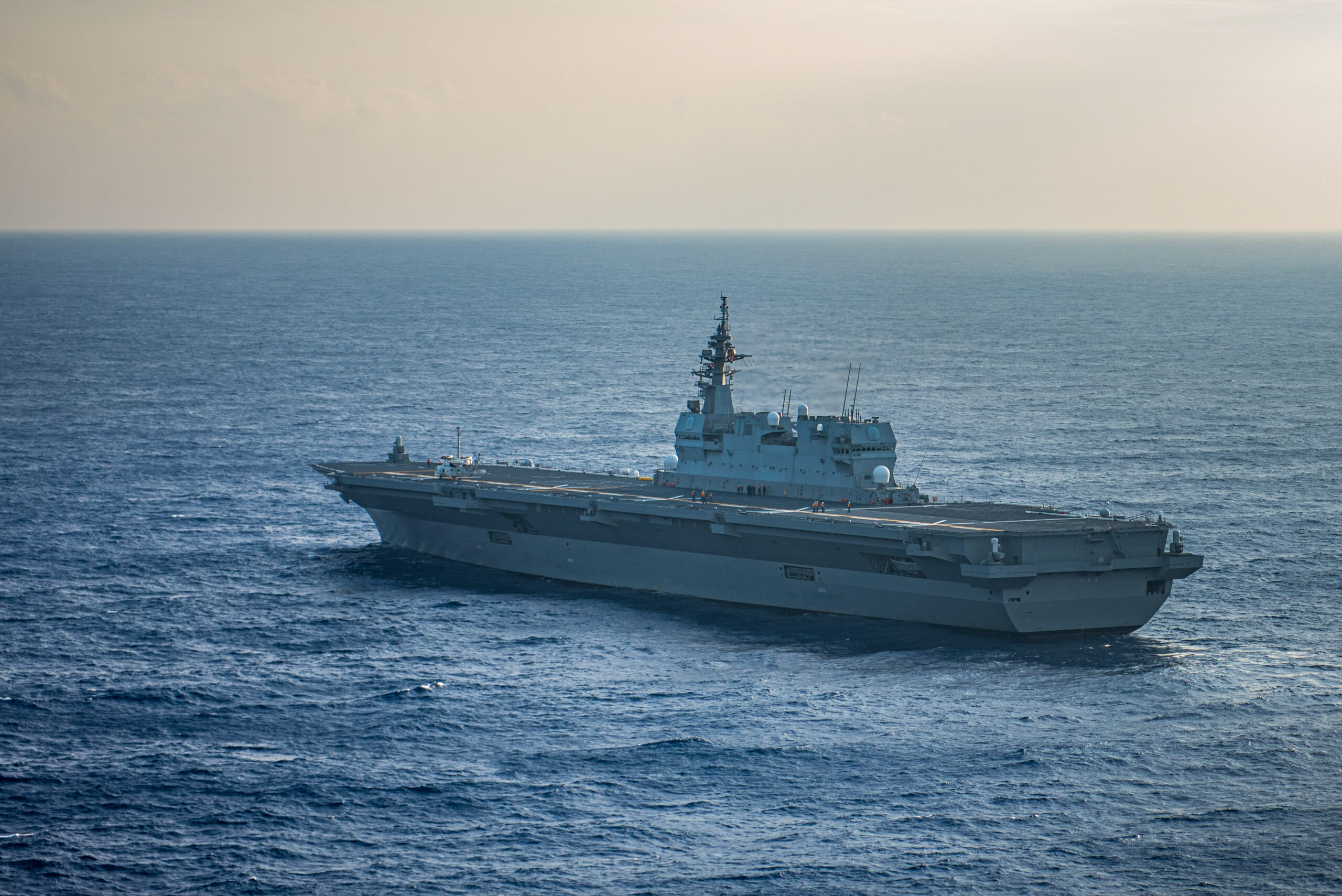
This post is part of a series looking back at the top naval stories from 2023.
International acquisition this year saw countries across the globe looking to keep pace with the regional threats they face.
While navies in the Indo-Pacific are looking at ways to modernize and counter China’s own naval modernization and aggression in the region, some European navies have increased coastal defense capabilities as Russia’s invasion of Ukraine enters its third year.
Taiwanese Naval Developments
From the christening of Taipei’s first domestically produced submarine, the commissioning of a 10,000-ton amphibious ship and the keel laying of new air defense frigates, Taiwan’s naval modernization efforts ramped up this year amid increasing threats from China.
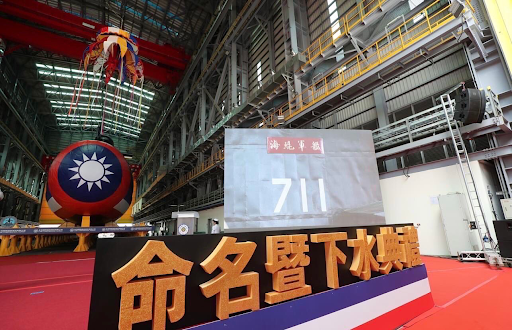
ROCS Hai Kun (SS 711), translating to Narwhal, was unveiled on Sept. 28th. Beginning construction at CSBC’s Kaohsiung Shipyard in November 2020, the submarine was completed within roughly two years. Hai Kun is the first of eight planned indigenous defense submarines for the Republic of China Navy, which currently uses a mix of World War II and Cold War-era attack boats.
While the program reportedly sourced expertise and equipment from foreign sources, experts say Hai Kun is reverse-engineered from the Zwaardvis-class submarines that Taiwan already operates. But unlike the two Dutch-designed attack boats already in Taiwanese service, these new submarines have modern American systems, including masts from L3 Harris and Sonar from RTX.
Hai Kun will inform the production of the rest of the class. Hai Kun is projected to join Taiwan’s fleet by 2026.
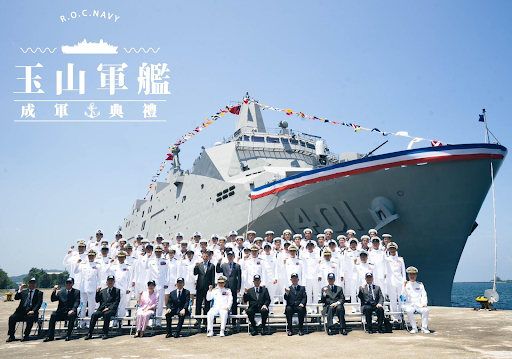
Delivered to the ROCN last year, the 10,000-ton amphib ROCS Yushan (LPD 1401) was commissioned on June 19th at Taiwan’s largest naval base in Kaohsiung. The first of four planned landing platform docks, these large amphibious assault ships were procured to replace the fleet’s aging amphibious assault fleet, which consists mostly of World War II-era landing ship tanks. Taiwan aims to deploy these vessels to ferry troops and equipment from its outlying islands off China’s coast and for humanitarian assistance duties.
The procurement of these large amphibs has come under criticism amid calls for Taiwan to adopt a more asymmetric naval strategy to counter China’s numeric and firepower advantage. John Dotson, the deputy director of the Global Taiwan Institute, told USNI News in June that there are “some elements of Taiwan’s military acquisition programs where some of these platforms are acquired for prestige purposes.”
With many of the ROCN’s surface combatants dating to the Cold War, the Taiwanese Navy is trying to procure smaller corvettes and frigates while modernizing existing assets to improve the fleet.
This year saw the delivery of three Tuo Chiang-class stealth corvettes. While smaller than the fleet’s existing frigates and destroyers, the catamaran-hulled vessels can cruise up to 45 knots and pack a punch with 16 anti-ship missiles. A separate variant dubbed the Anping-class offshore patrol vessel is in service with the Coast Guard Administration, with two delivered to the agency this year. While Taiwan’s coast guard operates the ships, the Anpings can support the operation of anti-ship missiles.
To address air defense concerns, Taiwan began the construction of two light frigates dedicated to anti-aircraft warfare in May. The two 2,500-ton frigates are the first in a class of 12 planned ships, which will also include dedicated variants for anti-submarine warfare. Additionally, the Kang Ding-class frigates are slated to receive vertical launching systems to host more advanced anti-aircraft armament.
China Launches New Frigate, Begins Carrier Catapult Testing
While China continued to build up its fleet, which is projected to reach over 400 hulls by 2025, this year saw the apparent next generation of People’s Liberation Army Navy surface combatants.
Following on from the ubiquitous Type 054A frigate, the first Type 054Bs were spotted in July during their construction in at least two separate shipyards. A completed 054B was spotted in August. The Chinese Ministry of National Defense confirmed the launch later that month. In comparison to its precursor, the Type 054B displaces 6000 tons, has more defensive weaponry and is projected to have superior sensors. Another new Chinese warship, a corvette-sized vessel sporting a stealthy design, was seen in November, Naval News reported, but a PLA photo suggests the vessel may be an experimentation platform.
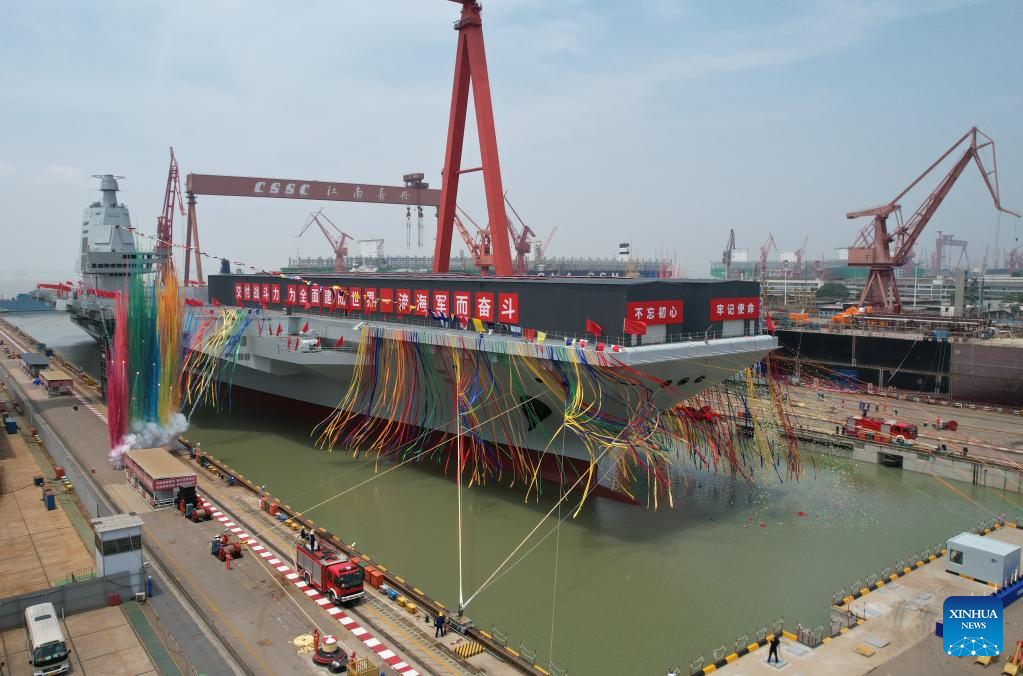
Also in November the PLAN supercarrier Fujian (18) reportedly began testing its electromagnetic aircraft catapult launch system. The 80,000 to 100,000-ton flattop is China’s first to use a catapult assisted take-off but arrested recovery, which allows for the launch of more types of aircraft and heavier payloads compared to the PLAN’s existing carriers, Liaoning (16) and Shangdong (17).
Indian Navy Procures French Fighters and Submarines
India selected 26 of Dassault Aviation’s Rafale-M to equip its latest aircraft carrier, INS Vikrant (R11). The main competitor for the Indian Navy’s fighter program was Boeing’s F/A-18E/F Super Hornet, the mainstay of U.S. Navy fighter attack squadrons. For the competition, both aircraft, traditionally launched by catapult off carriers, proved they could be launched on Vikrant’s ski-jump.
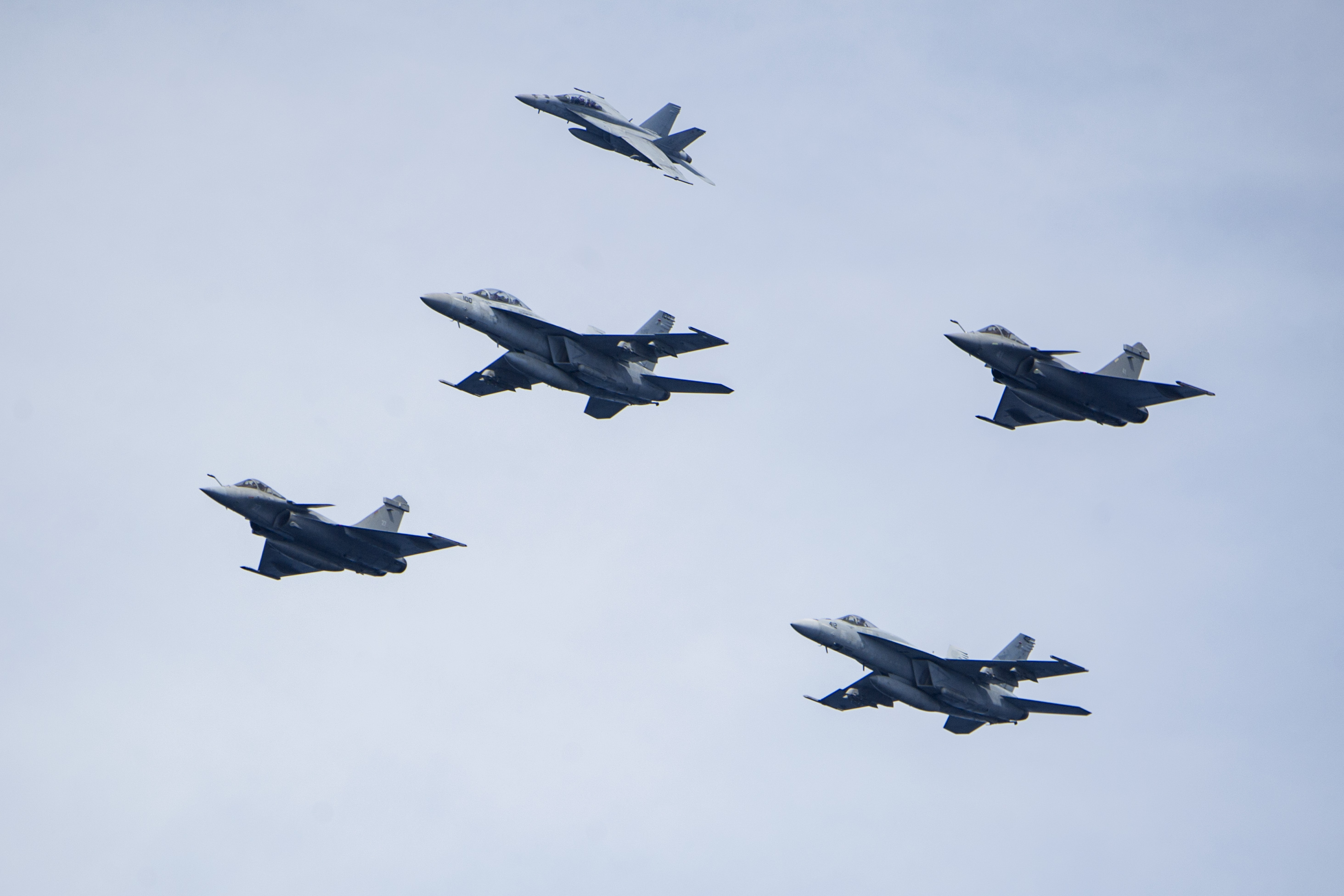
Concurrently with the Rafale selection, the Indian Navy plans to buy three Scorpène-class submarines. With adversaries like Pakistan and China building up their naval capabilities in the Indian Ocean, submarines are one of the Indian Navy’s many initiatives. The three new submarines will join the six that New Delhi previously ordered in 2005 under the P75 program. Dubbed the Kalveri-class, these French-designed attack boats are under construction in Indian shipyards.
India has also made progress on the procurement of 31 U.S. MQ-9B drones. These drones will be split among the Indian military branches, with 15 SeaGuardians going to the Navy and eight each to the Army and Air Force. While the U.S. approved the sale of these drones years ago, closer ties between New Delhi and Washington this year have seen the defense relationship improve as well. These drones are expected to enhance the Indian Navy’s maritime domain awareness capabilities across the Indian Ocean.
NATO’s Eastern Flank States Procure Naval Strike Missiles
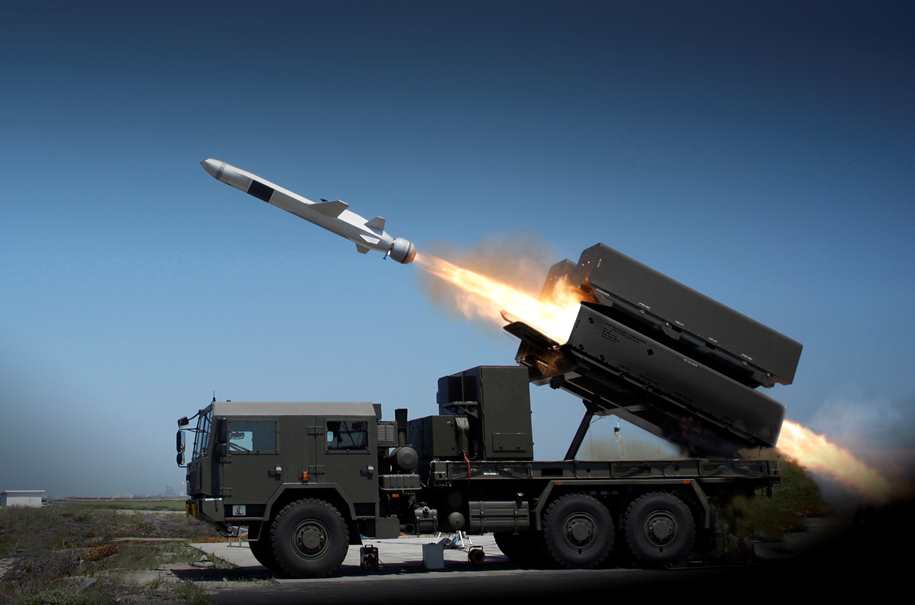
Amid increasing tensions in the Black and Baltic seas as a result of the Russian invasion of Ukraine, Romania and Latvia procured land-based Naval Strike Missile (NSM) batteries to bolster their coastal defense capabilities. With Bucharest’s and Riga’s purchase of the stealthy Norwegian anti-ship cruise missile, the number of current and planned NSM operators has increased to 14 nations.
Kongsberg’s stealthy anti-ship cruise missile also achieved initial operating capability on the United Kingdom Royal Navy frigate HMS Somerset (F82) in December. A combined total of 11 Type 23-class frigates and Type 45-class destroyers will receive NSM under the Maritime Offensive Surface Strike program. The missiles will replace the role of Harpoons, which were retired from active service this year across the Royal Navy, on British surface combatants.
Somerset is expected to hold a test firing of NSM next year.
Second U.K. Carrier Completes Aviation Trials, Hosts Drones
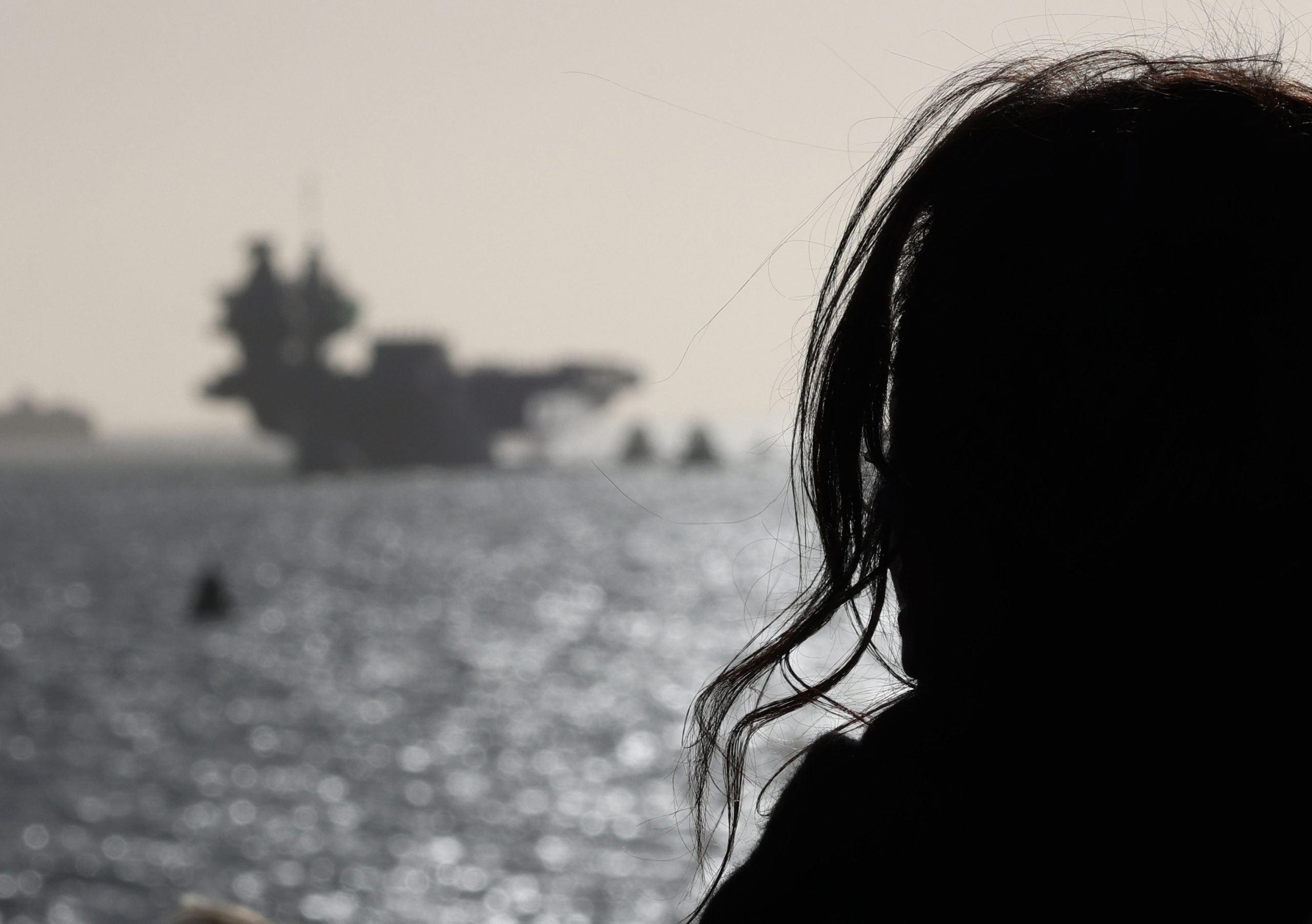
HMS Prince of Wales set off for the U.S. East Coast in September for a series of long-awaited aviation trials. While these tests were scheduled for 2022, a failure in the carrier’s propulsion systems left Prince of Wales in dock for repairs until July 2023. The carrier conducted several milestones for the Royal Navy during its deployment, including the first time a drone landed and took off from a British carrier in early September. The carrier also hosted a variety of U.S. Marine Corps and Coast Guard aircraft during the trials.
The culmination of Prince of Wales’ deployment was the takeoff and landing of a Mojave drone, which marked the first time the General Atomics unmanned aerial system landed on a carrier. These tests also saw the potential for similar types of drones to operate off of flattops to increase their long-range strike capabilities.
Japan Continues Carrier Refits, Secures Funding for More Aegis Destroyers
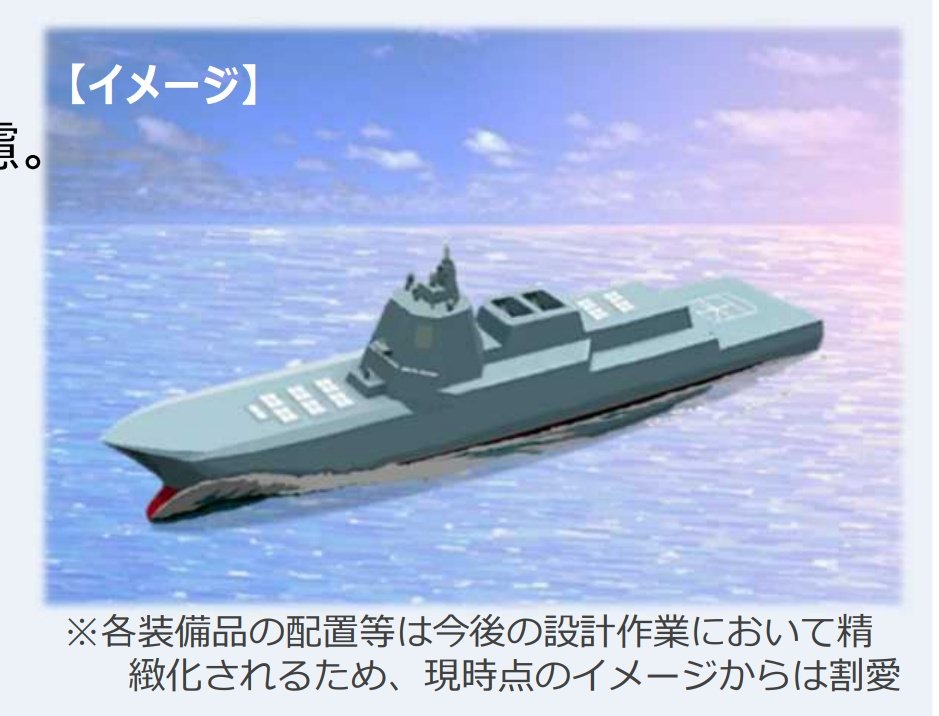
In the Indo-Pacific, Japan is in the process of modifying its two Izumo-class helicopter destroyers, JS Izumo (DDH 183) and JS Kaga (DDH 184), so they can accommodate the F-35B Lightning II Joint Strike Fighter. While Kaga began its conversion process two years after Izumo, Japanese ship spotters observed the completion of its flight deck in April as the vessel left its dock for the first time. Kaga’s flight deck now resembles the rectangular shape of U.S. amphibious assault ships like the forward-deployed USS America (LHA-6), which is also known as a lightning carrier.
The entire class is expected to complete the refit by 2027, with Izumo completing its deck conversion by 2026. Meanwhile, the first of the 42 F-35Bs that operate off the ships are expected to arrive next year.
In December, the Japanese Ministry of Defense officially secured funding for two new Aegis destroyers. With an allocated budget of $2.6 billion for two ships, the Aegis System Equipped Vessels (ASEV) project will see some of the largest surface combatants constructed by Japan to date.
These destroyers are expected to displace 12,000 tons, have a length of 623 feet, and carry 128 vertical launch systems cells for both ballistic missile defense, and also have an offensive strike capability with the Tomahawk cruise missiles. In October, Tokyo sped up its procurement of Tomahawk cruise missiles following a meeting with U.S. officials in Washington. Japan plans to procure around 400 of the long-range cruise missiles by 2027 for use on its warships.





